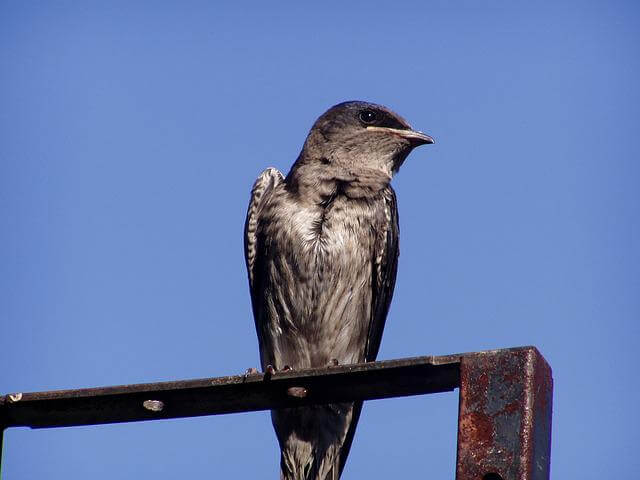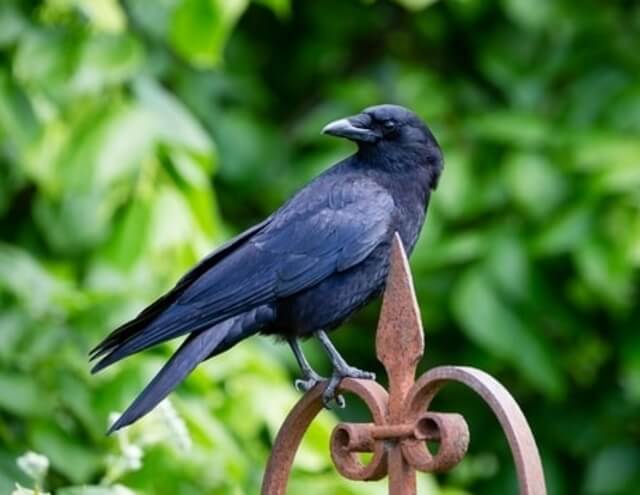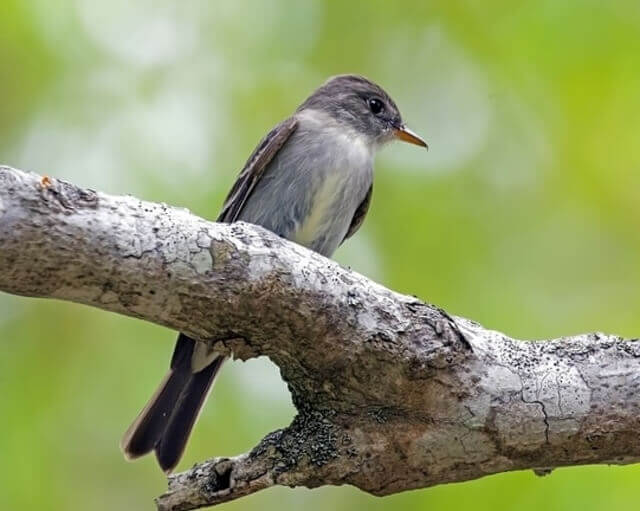The ladybug is often considered a gardener’s best friend. They prey on pests such as aphids and garden insects that could potentially destroy plants, so they’re essential to have around. But these little critters can also be an annoyance when they take up residence in your home.
Fortunately, there are many birds that eat ladybugs and keep them out of your garden and away from your house! This article explores 10 birds that eat ladybugs, with photos and information about each one.
Table of Contents
Types of Birds That Eat Ladybugs
Barn Swallow
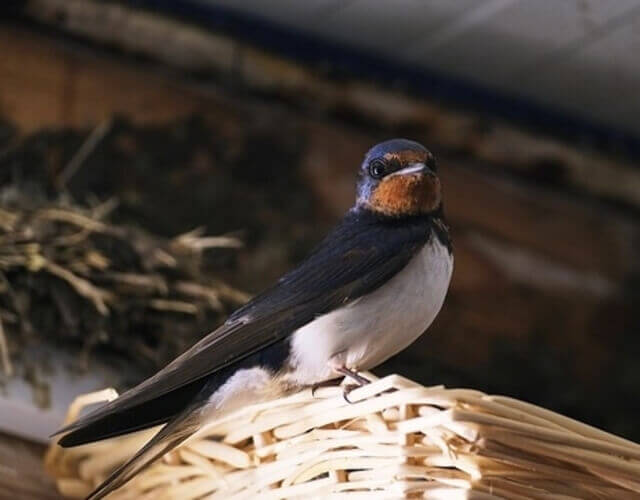
Barn Swallows are a widespread, migratory bird in North America. They range from the Canadian Arctic to Central America and south to northern Mexico. Barn swallows are most common in agricultural areas with plenty of vegetation, but they will also inhabit suburban areas.
The swallow’s diet consists mainly of insects, especially small ones such as ladybugs. Barn swallows can eat a lot of large ladybugs in one sitting! They swallow the bugs whole with their large beaks and then quickly break them down so that they can absorb all the nutrients.
Chimney Swift
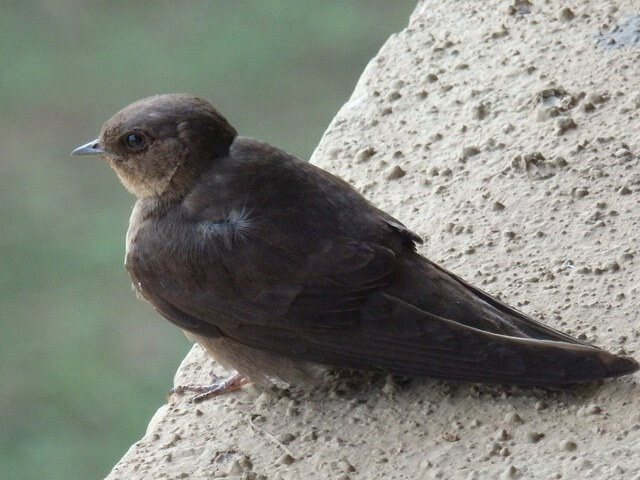
The Chimney Swift is a small, swift-flying bird that resides mostly in the United States and Canada. The Chimney Swift’s range extends from the northeastern U.S., through most of Canada and into parts of northern Mexico.
This is a small, swift bird that can be found in a variety of habitats, including woodlands and prairies. The diet of the Chimney Swift includes insects and other small animals. They are especially fond of eating ladybugs!
Black-billed Magpie
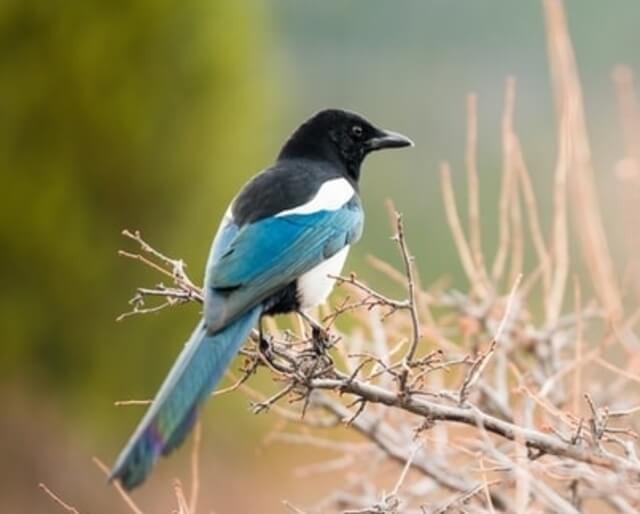
The Black-billed Magpie is a large bird that can be found in the eastern part of North America. The range of this bird includes the east coast, up through the Canadian provinces of Quebec and Ontario, as well as southern New England. This magpie prefers to live near bodies of water such as rivers, streams and lakes. It also frequents areas with lots of trees.
The Black-billed Magpie is an omnivore and its diet consists mainly of insects such as ladybugs, beetles, grasshoppers, crickets and bugs. It will also eat small fruits when available. This bird is not afraid to raid nests for eggs or young birds.
Purple Martin
Purple Martins are one of the most common birds in North America. They range from southern Canada to Central America and across much of the United States. These birds like to live near water, preferably in areas with lots of fruiting trees including apple, cherry, pear, plum and willow trees or other perches for them to build their nests.
Their diet consists mainly of insects, but they will also feed on small vertebrates. These birds enjoy eating ladybugs, which makes them an important part of insect control programs!
American Crow
The American Crow is a common bird found throughout North America. They have a range that stretches from Alaska to Mexico. In the United States, they are mainly found in the eastern part of the country. Their habitat ranges from open areas such as fields and meadows, to forests and suburbs.
The American Crow feeds mostly on small animals, such as mice and lizards, but will also eat berries and insects. They enjoy eating ladybugs!
Eastern Kingbird
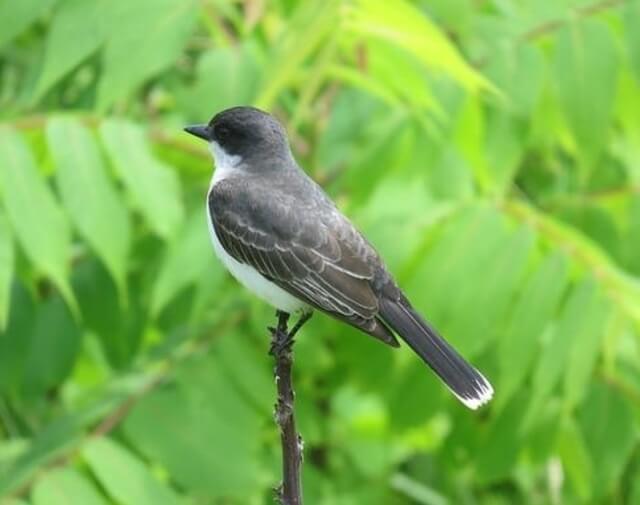
The Eastern Kingbird is a common bird seen throughout much of the eastern United States. It ranges from Florida to Maine, and can also be found in the Midwest and parts of Canada. The Eastern Kingbird is a migratory bird, spending the winter in Central and South America, before moving into North America in late spring or early summer.
They prefer dense, wooded areas with plenty of perches and nesting sites. Their diet consists mostly of insects, but they will also eat berries and fruit. They are considered a beneficial bird because they feed on many pests, such as mosquitoes, flies and ants. They are also known to enjoy eating ladybugs!
Eastern Bluebird

The Eastern Bluebird ranges from the Canadian province of New Brunswick south to North Carolina, west to Iowa and Illinois, and north to Maine. This bird can be found in a variety of habitats from near water (rivers, lakes, ponds) to open country.
Eastern bluebirds prefer to feed on insects such as beetles, caterpillars, ladybugs and moths but will also take other small prey such as spiders and frogs. They often forage high in trees, but will also forage on the ground.
Brown Thrasher
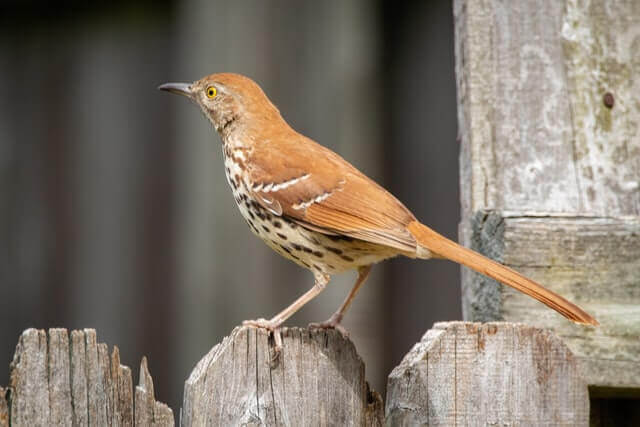
The Brown Thrasher is a common bird in the United States. It ranges from eastern Texas to New England, and throughout much of Canada. The Brown Thrasher is found in a variety of habitats, including deciduous and coniferous forests, open fields, and suburban areas.
The Brown Thrasher feeds on insects, beetles and caterpillars, and they are especially fond of eating ladybugs. It also consumes some berries, nuts, seeds, fruit and sometimes frogs, snakes, lizards.
Eastern Wood Pewee
The Eastern Wood Pewee is a small passerine bird found in the eastern United States and Canada. The Eastern Wood Pewee ranges from the southern Canadian provinces of New Brunswick, Nova Scotia and Prince Edward Island east to Maine, Connecticut, Massachusetts, New York and Pennsylvania, and north through much of Wisconsin to Ontario.
These small birds are found in a variety of habitats, but prefer moist forests with some open areas. Their diet consists mostly of insects, which they catch by flying through the air or stalking their prey on the ground. They particularly enjoy eating ladybugs, and can often be seen perched atop a ladybug as it crawls across the ground.
Northern Mockingbird
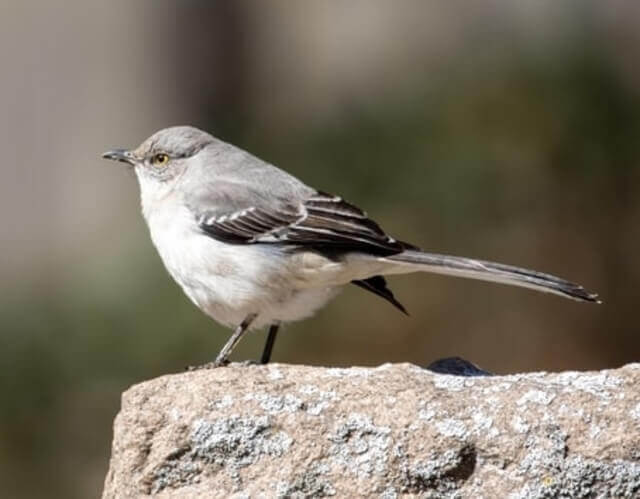
The Northern Mockingbird can be found in all but the most extreme of cold climates. They inhabit a range that spans from southern Canada to Central America, making them one of the most widely distributed songbirds in North America.
This bird is well known for its beautiful vocalizations, which include a variety of notes and whistles. The Northern Mockingbird’s diet consists mainly of insects, which it captures by sifting through leaf litter or catching them in midair. They are also known to enjoy eating ladybugs!
Role of Ladybugs in Bird Diets
The role of ladybugs in bird diets is a fascinating aspect of avian biology. Several bird species incorporate ladybugs into their diets, and these small beetles play a vital role in the nutritional balance of various birds. Here, we delve into the significance of ladybugs as a food source for birds:
- Protein Source: Ladybugs are rich in protein, making them an excellent food source for birds. Protein is essential for muscle development, especially during breeding seasons when birds require extra energy for courtship, mating, and raising their young.
- Distinctive Defense Mechanisms: Ladybugs have evolved distinctive defense mechanisms that make them unattractive to predators like birds. When threatened, they release a foul-tasting fluid from joints in their legs, which acts as a deterrent. Additionally, their bright and recognizable colors serve as a warning signal to potential predators, signaling that they are unpalatable. In response to danger, ladybugs will often feign death, further deterring would-be attackers. These specialized defense tactics are key reasons why ladybugs are avoided by most predators.
- Nutrient Variety: Ladybugs contain essential nutrients like vitamins and minerals, including vitamin C and calcium. Birds need a well-rounded diet to maintain their health, and ladybugs offer an additional source of these nutrients.
- Diverse Bird Species: A range of bird species, from swallows to magpies, incorporates ladybugs into their diet. Their presence in ecosystems can provide nutritional diversity for various birds.
- Seasonal Availability: Ladybugs are more abundant during certain seasons, aligning with the periods of high bird activity, such as breeding. Birds can efficiently exploit this food source during these times.
- Predation Control: Ladybugs are herbivorous and, in large numbers, can be pests for vegetation. Birds play a role in controlling ladybug populations, thus contributing to ecosystem balance.
Understanding the role of ladybugs in bird diets not only sheds light on the intricacies of avian behavior and ecology but also highlights the delicate interplay between various species in their shared environments.
Ladybugs as a Food Source
In the intricate world of avian diets, ladybugs, often regarded as charming insects by humans, serve as a valuable food source for several bird species. Let’s delve into the significance of ladybugs as part of a bird’s diet and explore some intriguing details about this ecological relationship.
The Ladybug Appeal
Ladybugs, scientifically known as Coccinellidae, encompass a diverse family of small beetles known for their distinctive spotted appearance. While they are celebrated for their role in controlling garden pests, they hold an entirely different status in the avian realm. Birds are drawn to these insects for several compelling reasons:
High Nutritional Value
Ladybugs are a nutritional powerhouse for birds. They are rich in essential nutrients, including protein and fat, making them a valuable energy source for avian species. In particular, ladybugs offer a crucial protein boost during the breeding season when birds require extra energy for egg production and chick-rearing.
Ease of Capture
Ladybugs’ relatively slow-moving nature and conspicuous size make them an accessible and rewarding prey for birds. Their bright colors, often signifying toxicity to potential predators, aren’t as much of a deterrent to birds, making them an attractive food source.
Abundant Availability
One of the key factors that make ladybugs appealing to birds is their abundance. Ladybugs can be found in various habitats, from gardens to agricultural fields, providing a convenient and frequently available food source for many bird species.
Birds That Relish Ladybugs
Numerous bird species are known to incorporate ladybugs into their diets. These include barn swallows, chimney swifts, black-billed magpies, and many others. Their consumption of ladybugs is typically more prevalent during the breeding season when the nutritional demands on birds are at their peak.
Implications for Conservation
The role of ladybugs as a food source for birds adds another layer to the intricate web of ecological relationships. The availability and abundance of ladybugs can impact bird populations, especially during critical life stages. As such, understanding this dynamic is vital for effective conservation efforts.
In summary, ladybugs are not only beneficial insects in the context of pest control but also an essential food source for various bird species. Recognizing their role in avian diets contributes to a deeper understanding of the natural world and the delicate balance of ecosystems.
Conservation Implications
The interaction between birds and ladybugs presents several noteworthy conservation implications, shedding light on the intricacies of maintaining biodiversity and ecological balance.
Biodiversity Preservation
Understanding the significance of ladybugs as a food source for birds is integral to biodiversity preservation. Both ladybugs and birds play essential roles in their respective ecosystems. Ladybugs contribute to natural pest control, while birds help regulate insect populations and disperse seeds. Maintaining the health of these interconnected systems is paramount for overall biodiversity.
Habitat Preservation
Conserving habitats that support both ladybugs and avian species is crucial. Ladybugs inhabit a range of environments, from urban gardens to agricultural fields. Preserving these habitats ensures the continued availability of ladybugs as a food source for birds. It is essential to focus on habitat protection and restoration efforts to safeguard these interconnected relationships.
Pesticide Use
The use of pesticides, while targeting harmful pests, can inadvertently affect ladybug populations and, subsequently, the birds that rely on them. Conservation efforts should promote responsible pesticide use to minimize harm to non-target insects like ladybugs. This approach helps maintain a stable food source for birds and supports broader ecosystem health.
Breeding Season Considerations
During breeding seasons, when birds require heightened nutrition for successful reproduction and chick-rearing, the availability of ladybugs becomes particularly significant. Conservationists should emphasize preserving ladybug populations to support bird breeding success, contributing to the overall sustainability of avian species.
Educational Outreach
Educational programs and outreach can increase awareness of the essential role ladybugs play in the diets of various bird species. Fostering a deeper understanding of these ecological relationships encourages public support for conservation initiatives that aim to protect both ladybugs and birds.
In summary, recognizing the conservation implications of the interaction between ladybugs and birds is an essential step in preserving biodiversity and maintaining ecological balance.
By focusing on habitat preservation, responsible pesticide use, and public education, we can ensure that these valuable relationships continue to benefit the natural world.
Conclusion
The relationship between birds and ladybugs reveals nature’s intricate balance. Birds, from barn swallows to Northern mockingbirds, benefit from the nutritional value of ladybugs, underscoring the importance of preserving habitats and responsible pesticide use. Together, we safeguard biodiversity in our shared environment.
FAQs
Are ladybugs toxic to birds?
Ladybugs are generally non-toxic to birds since they don’t produce harmful chemicals. In fact, they can be a valuable food source due to their high protein content.
Do all bird species eat ladybugs?
The consumption of ladybugs varies among bird species, primarily based on their dietary preferences. Insects like ladybugs may be consumed more by insectivorous bird species.
Can birds be harmed by consuming ladybugs?
Consuming ladybugs is typically not harmful to birds. In fact, ladybugs offer a nutritious and protein-rich food source that can benefit their health and overall diet.


